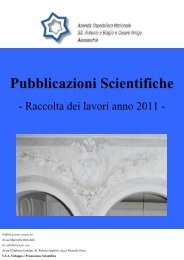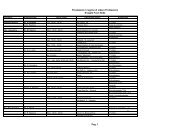Working Paper of Public Health Volume 2012 - Azienda Ospedaliera ...
Working Paper of Public Health Volume 2012 - Azienda Ospedaliera ...
Working Paper of Public Health Volume 2012 - Azienda Ospedaliera ...
You also want an ePaper? Increase the reach of your titles
YUMPU automatically turns print PDFs into web optimized ePapers that Google loves.
<strong>Azienda</strong> <strong>Ospedaliera</strong> Nazionale“SS. Antonio e Biagio e Cesare Arrigo”<strong>Working</strong> <strong>Paper</strong> <strong>of</strong> <strong>Public</strong> <strong>Health</strong>nr. 3/<strong>2012</strong>The data come from the Transplant Procurement Management Organization (TPM), theWorld <strong>Health</strong> Organization (WHO), World Bank (WB) and the SociedadLatinoamericana de Nefrología e Hipertensión (SLANH). The sample contains 34countries 14 over 5-year period (1998-2002). The choice <strong>of</strong> the countries is related toavailability <strong>of</strong> data 15 .The variables used in this paper follow Abadie and Gay (2004), Healy (2005) andAnbarci and Caglayan (2005). They are: number <strong>of</strong> deaths by traffic accident per 100,000population; number <strong>of</strong> deaths by brain vascular disease per 100,000 population, GDP percapita; total health expenditure per capita; percentage <strong>of</strong> population that has access to theInternet; dummy for catholic country (=1 if 50% or more <strong>of</strong> population are catholic); anddummy for legal system (=1 if the country has common law). The dependent variable isthe rate <strong>of</strong> cadaveric organ donation per million population (pmp) and the variable <strong>of</strong>interest is a dummy for countries that have presumed consent as law on organ donation.Figure 1 shows a panoramic view <strong>of</strong> cadaveric organ donation in the sample. In the upperhalf <strong>of</strong> the Figure are countries with presumed consent law on cadaveric organ donationand the other half in blue are countries with informed consent. Spain has the highestdonation rates, followed by Austria and Portugal, these three countries having presumedconsent law. In 2002, the USA had the highest donation rate <strong>of</strong> the countries withinformed consent law, and which was close to the rates achieved by Austria and Portugalthat year. In 2002, on average, cadaveric organ donation rate by countries that havepresumed consent was 14.91 pmp, and 10.51 for countries with informed consent.Countries with presumed consent had an increase <strong>of</strong> 12% in their rates from 1998 to 2002,while the others a decrease <strong>of</strong> 12%. In absolute value, Italy was the country that14 The 34 countries we have analyzed in this paper are reported in Table 1.15 A well-known problem in health empirical works is the presence <strong>of</strong> some missing values, particularlywhen the analysis uses countries over time. Our sample has 4% missing values, related to two variables:number <strong>of</strong> deaths from celebro-vascular diseases and number <strong>of</strong> deaths from traffic accidents. If we dropthese missing values, 20% <strong>of</strong> the sample information would be missed. To avoid this loss, we imputedvalues from an OLS trend, using the previous four years. We believe that this method is a good way to treatthe problem, since there are very small variations over years for brain diseases and traffic accident.7



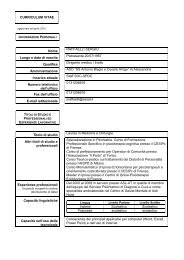
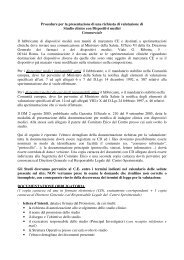

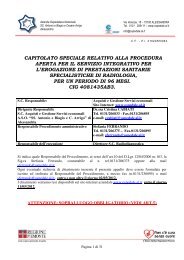
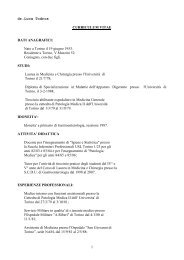
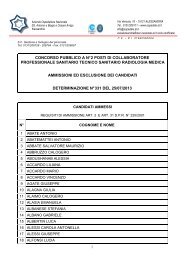

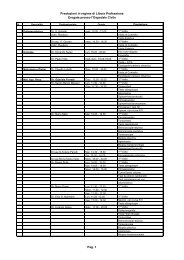


![[torino - 1] lastampa/urc/01 ... 26/10/09 - Azienda ...](https://img.yumpu.com/44058002/1/190x32/torino-1-lastampa-urc-01-26-10-09-azienda-.jpg?quality=85)

